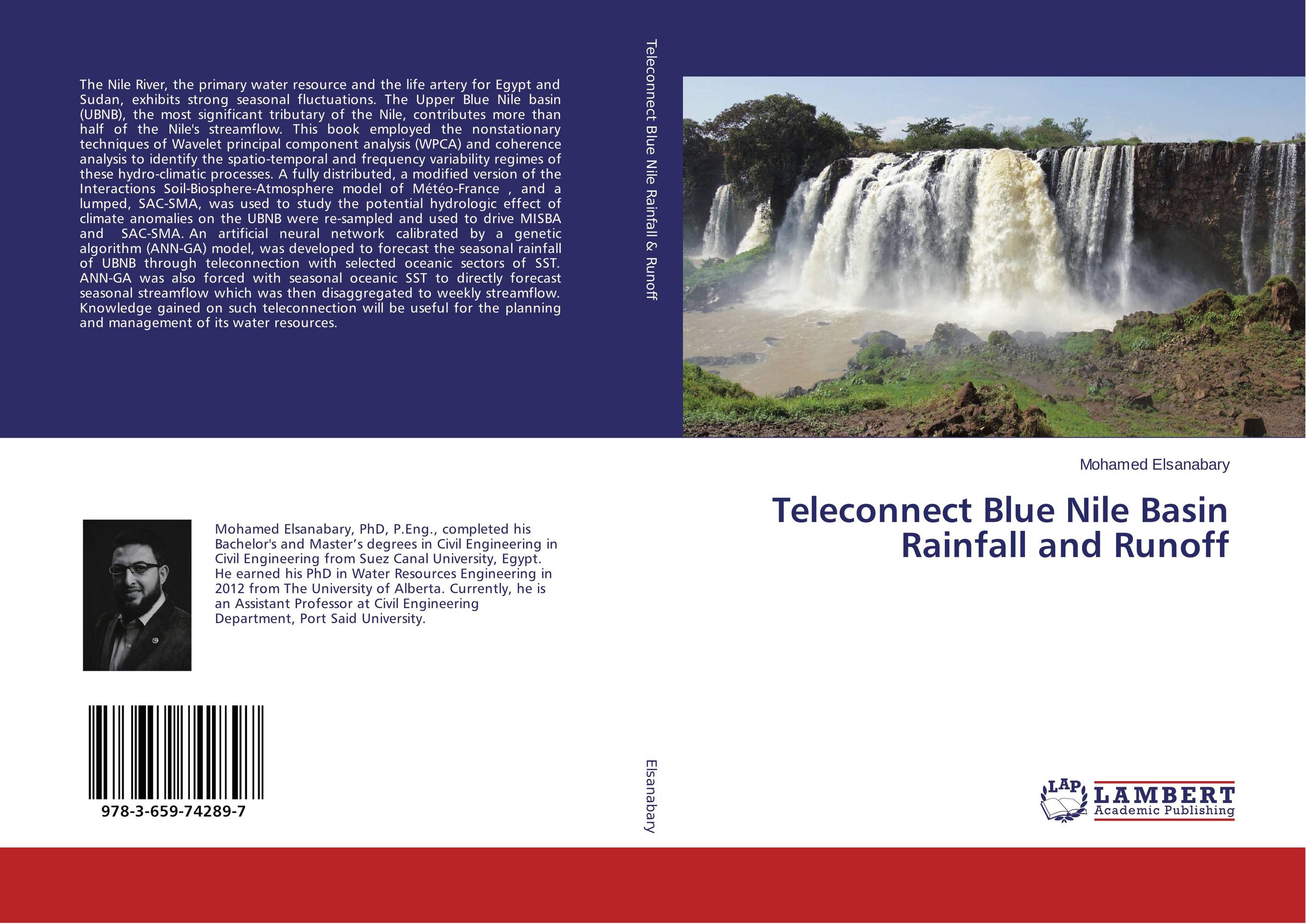| Поиск по каталогу |
|
(строгое соответствие)
|
- Профессиональная
- Научно-популярная
- Художественная
- Публицистика
- Детская
- Искусство
- Хобби, семья, дом
- Спорт
- Путеводители
- Блокноты, тетради, открытки
Teleconnect Blue Nile Basin Rainfall and Runoff.

В наличии
| Местонахождение: Алматы | Состояние экземпляра: новый |

Бумажная
версия
версия
Автор: Mohamed Elsanabary
ISBN: 9783659742897
Год издания: 2015
Формат книги: 60×90/16 (145×215 мм)
Количество страниц: 248
Издательство: LAP LAMBERT Academic Publishing
Цена: 47794 тг
Положить в корзину
| Способы доставки в город Алматы * комплектация (срок до отгрузки) не более 2 рабочих дней |
| Самовывоз из города Алматы (пункты самовывоза партнёра CDEK) |
| Курьерская доставка CDEK из города Москва |
| Доставка Почтой России из города Москва |
Аннотация: The Nile River, the primary water resource and the life artery for Egypt and Sudan, exhibits strong seasonal fluctuations. The Upper Blue Nile basin (UBNB), the most significant tributary of the Nile, contributes more than half of the Nile's streamflow. This book employed the nonstationary techniques of Wavelet principal component analysis (WPCA) and coherence analysis to identify the spatio-temporal and frequency variability regimes of these hydro-climatic processes. A fully distributed, a modified version of the Interactions Soil-Biosphere-Atmosphere model of M?t?o-France , and a lumped, SAC-SMA, was used to study the potential hydrologic effect of climate anomalies on the UBNB were re-sampled and used to drive MISBA and SAC-SMA. An artificial neural network calibrated by a genetic algorithm (ANN-GA) model, was developed to forecast the seasonal rainfall of UBNB through teleconnection with selected oceanic sectors of SST. ANN-GA was also forced with seasonal oceanic SST to directly forecast seasonal streamflow which was then disaggregated to weekly streamflow. Knowledge gained on such teleconnection will be useful for the planning and management of its water resources.
Ключевые слова: hydrology, Nile River Basin, rainfall variability, Water Resources Engineering, wavelet analysis



